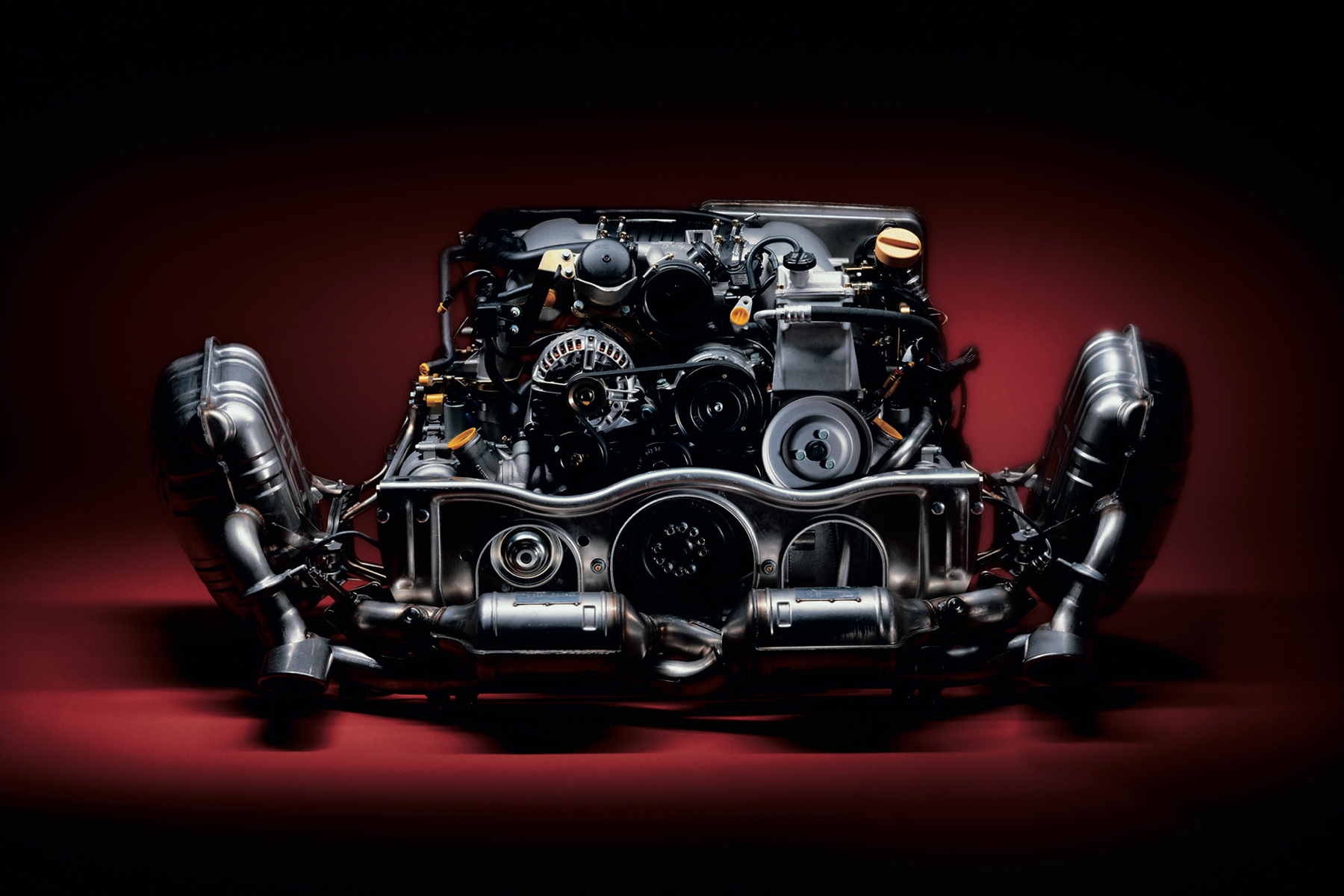Technology explained: ‘Mezger’ engine
First off, the ‘Mezger engine’ moniker is a bit of a misnomer as legendary engine builder, Hans Mezger has been designing Porsche powerplants since the Sixties. However, in the 911 world, the term has recently become synonymous with the engine fitted to GT3s (up until the introduction of the 991 generation).
Unlike the M96 and M97 motors with their ‘integrated dry sump system’ (the two-piece crankcase design is, in reality, little more than a modified wet sump), the M96/72 ‘Mezger’ engine utilises a true dry sump thanks to its roots in motorsport.
The engine was initially designed for the twin-turbocharged 911 GT1 Le Mans racer, meaning that, to reduce oil surge (and a subsequently dangerous drop in pressure) during hard cornering, oil is harvested from the GT1-derived crankcase by two scavenge pumps.
This oil is transferred to a separate, baffled oil tank (which is mounted to the engine) before oil pumps – one mounted in each cylinder head – pump the lubricating fluid through the various oil galleries.
The engine is very similar in design to the flat six found in the 962 prototype however, where that powerplant used separate cylinder heads for each cylinder, the M96/72 uses a single head per bank.
The four-valve head’s design is derived from the water-cooled 959, although extensive work was needed to mate it to the 911 GT3’s cylinder size.
In the 996 GT3 Mk1 the bore was 100mm, with a stroke of 76.4mm while, by the Mezger unit’s swansong in the 997 GT3 RS 4.0, the bore had been expanded to its maximum of 102.7mm, with the remaining 200cc of capacity increase achieved with an 80.4mm stroke.
Thanks to its racing intentions, the GT3’s motor doesn’t suffer from IMS bearing failures like its M96 and M97 cousins. While the engine still uses an intermediate shaft to drive the camshafts, the oil pumps are driven directly by the crank. What’s more, the GT1-derived block has a different oil gallery design that ensures the IMS bearing remains lubricated at all times.
Our online ‘technology explained’ features are the perfect way to brush up on Porsche’s increasingly complex engineering. Read them all here.



Comments (2)